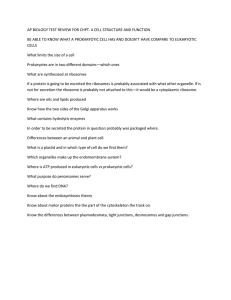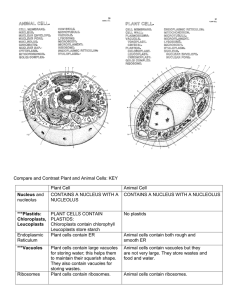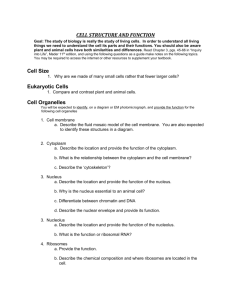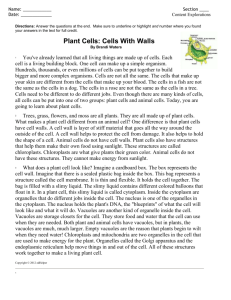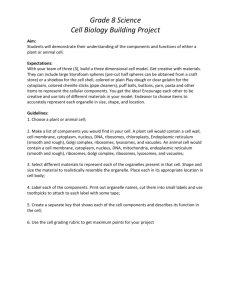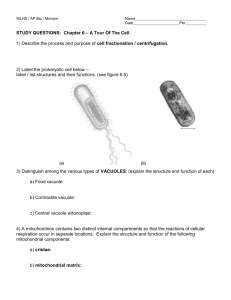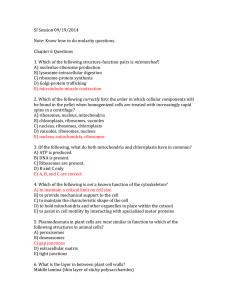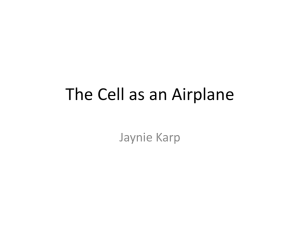here
advertisement
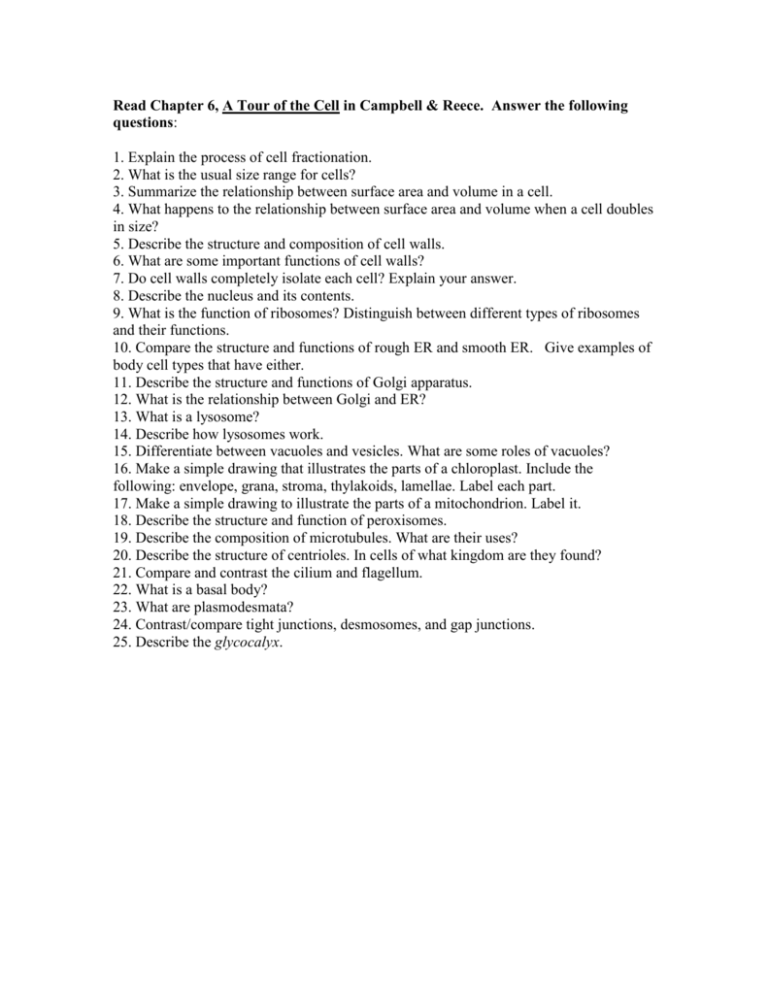
Read Chapter 6, A Tour of the Cell in Campbell & Reece. Answer the following questions: 1. Explain the process of cell fractionation. 2. What is the usual size range for cells? 3. Summarize the relationship between surface area and volume in a cell. 4. What happens to the relationship between surface area and volume when a cell doubles in size? 5. Describe the structure and composition of cell walls. 6. What are some important functions of cell walls? 7. Do cell walls completely isolate each cell? Explain your answer. 8. Describe the nucleus and its contents. 9. What is the function of ribosomes? Distinguish between different types of ribosomes and their functions. 10. Compare the structure and functions of rough ER and smooth ER. Give examples of body cell types that have either. 11. Describe the structure and functions of Golgi apparatus. 12. What is the relationship between Golgi and ER? 13. What is a lysosome? 14. Describe how lysosomes work. 15. Differentiate between vacuoles and vesicles. What are some roles of vacuoles? 16. Make a simple drawing that illustrates the parts of a chloroplast. Include the following: envelope, grana, stroma, thylakoids, lamellae. Label each part. 17. Make a simple drawing to illustrate the parts of a mitochondrion. Label it. 18. Describe the structure and function of peroxisomes. 19. Describe the composition of microtubules. What are their uses? 20. Describe the structure of centrioles. In cells of what kingdom are they found? 21. Compare and contrast the cilium and flagellum. 22. What is a basal body? 23. What are plasmodesmata? 24. Contrast/compare tight junctions, desmosomes, and gap junctions. 25. Describe the glycocalyx.
